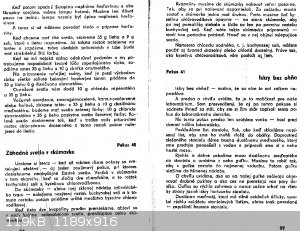
FragranceLover89 - 29-10-2020 at 19:56
I have been interested in the phenomenon of crystalloluminesence since I discovered that NaCl produces high energy blue light as it crystallizes due
to strong electrostatic interactions between the Na LUMO and Cl HOMO. I tried to quickly crash out NaCl by creating a saturated salt solution doped
with Cu ions and then adding HCl. Nothing happened though. I think it was overdoped with metal ions and the HCl was not concentrated enough. Has
anyone tried this before?
[Edited on 30-10-2020 by FragranceLover89]
woelen - 30-10-2020 at 00:50
A similar, but stronger effect is said to exist in crystallization of a mix of Na2SO4 and K2SO4. I, however, have no personal experience with this. I
never heard about this phenomenon in NaCl though.
Fery - 30-10-2020 at 02:03
NaCl crystallizes only sooooo little when quickly cooling saturated boiling solution in ice bath (check the NaCl solubility curve at 0 and 100 C).
Maybe adding ethanol could force it to crystallize at appreciable amount? Or adding HCl should work too. Mix of the 2 salts suggested by woelen is
preferred method for your luminiscence... I read about it very long ago when I was a child in my first chemistry book. I did not yet perform this
experiment either.
Fery - 30-10-2020 at 02:31
Man I found the book, this was my first chemistry book when I was small boy.
prof. Zivko K. Kostic - Medzi hrou a chemiou (between game/playing and chemistry) experiment No 40.
Sat. sol NaCl in test tube, carefully slowly (!!!) add conc. HCl so they do not mix (!!!) - slowly on the wals of test tube, suddenly vigorously mix
the 2 chemicals. Should produce beautiful green-paleblue light pervading the whole test tube. Instead of HCl ethanol could be used.

FragranceLover89 - 30-10-2020 at 06:58
That is pretty cool. I am scared of acid splashes in the dark. Maybe I will try it using the other methods.
Fery - 30-10-2020 at 09:40
yes in the book I posted the picture from, there is mentioned that ethanol should work too... just it is necessary to put the 2 solutions into a test
tube in that way that they are not mixed... the second one dropwise on the walls of the test tube and very slowly... only then shake vigorously the
testing tube so they mix together very fast... sat sol NaCl is more dense so to the bottom and the second chem at the top of it
Pok - 2-11-2020 at 14:06
I made a lot experiments on crystalloluminescence:
strontium bromate (brightest)
arsenic trioxide (second brightest)
sodium chloride (most remarkable effects that cannot be seen on video or photo)
I recommend the NaCl experiment. It's really nice. Also, the mechanism seems to be different from the other experiments, where triboluminescence is
the cause.
Sodium potassium sulfate ist quite bright, too. I also made experiments with strontium nitrate, barium chlorate and barium bromate. The later gives
good results.
FragranceLover89 - 2-11-2020 at 18:39
Nice! Did you mix etoh with a saturated NaCl solution?
Did you mix etoh with a saturated NaCl solution?
Pok - 3-11-2020 at 07:26
No, I poured saturated NaCl solution into 24 % HCl. With pure NaCl and HCl only extremely weak light can be observed. With addition of Cu2+ and Ag+
Ions the light is much, much brighter but still very, very weak.

 Did you mix etoh with a saturated NaCl solution?
Did you mix etoh with a saturated NaCl solution?